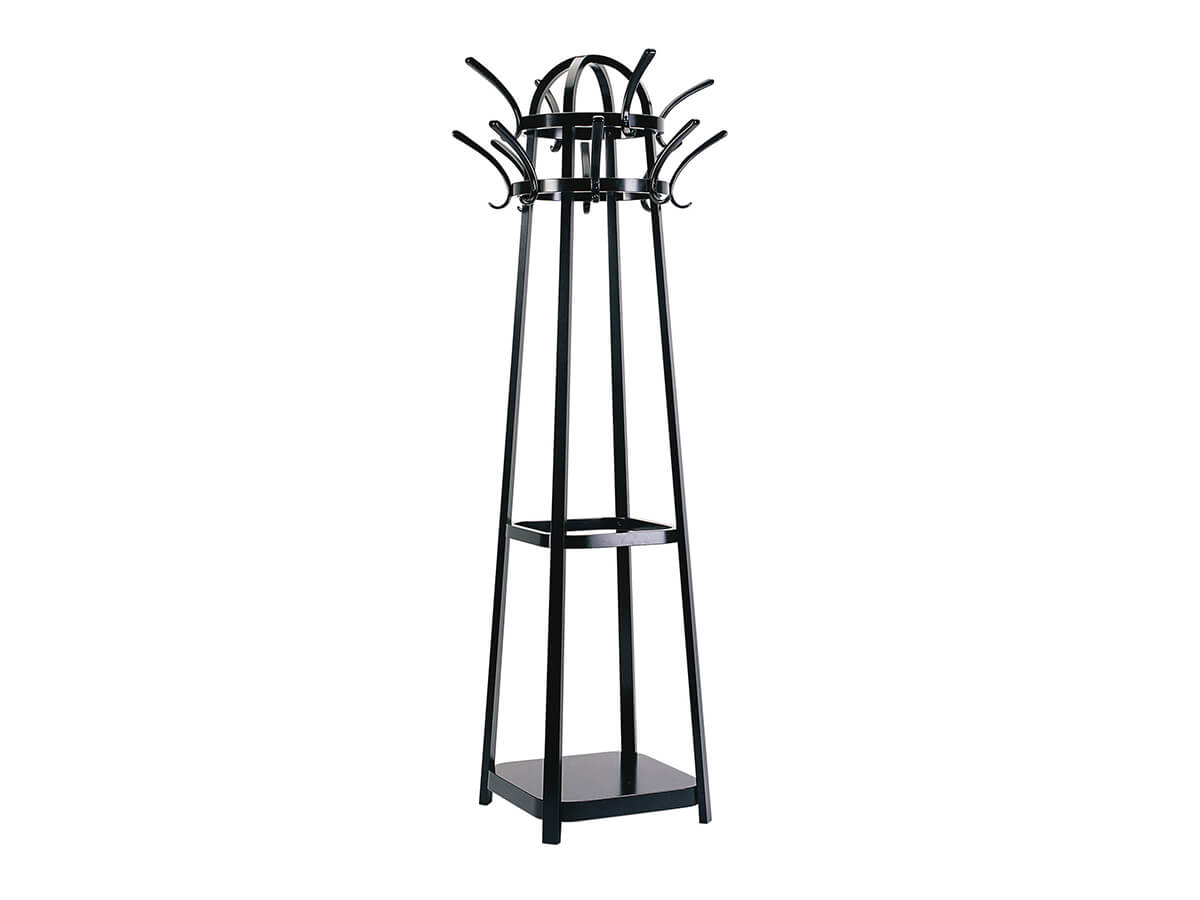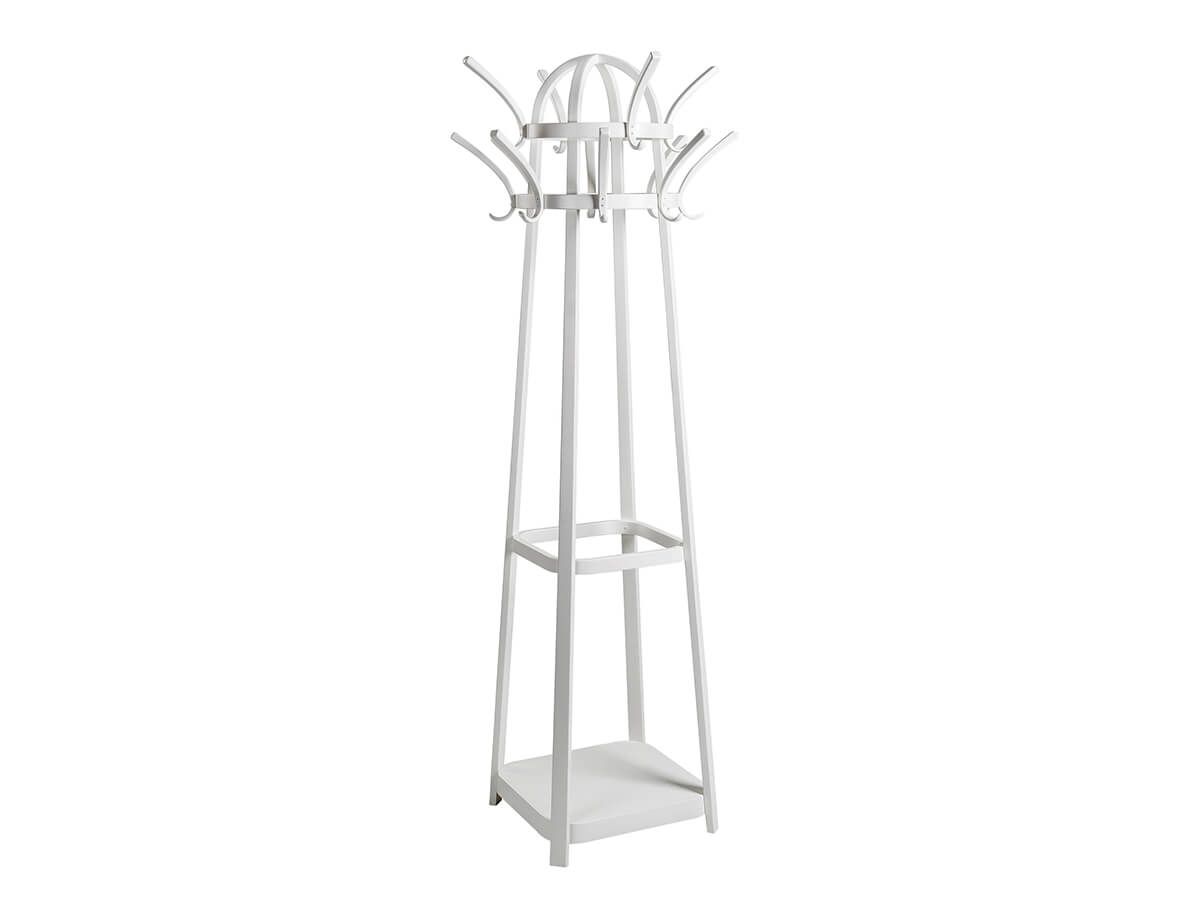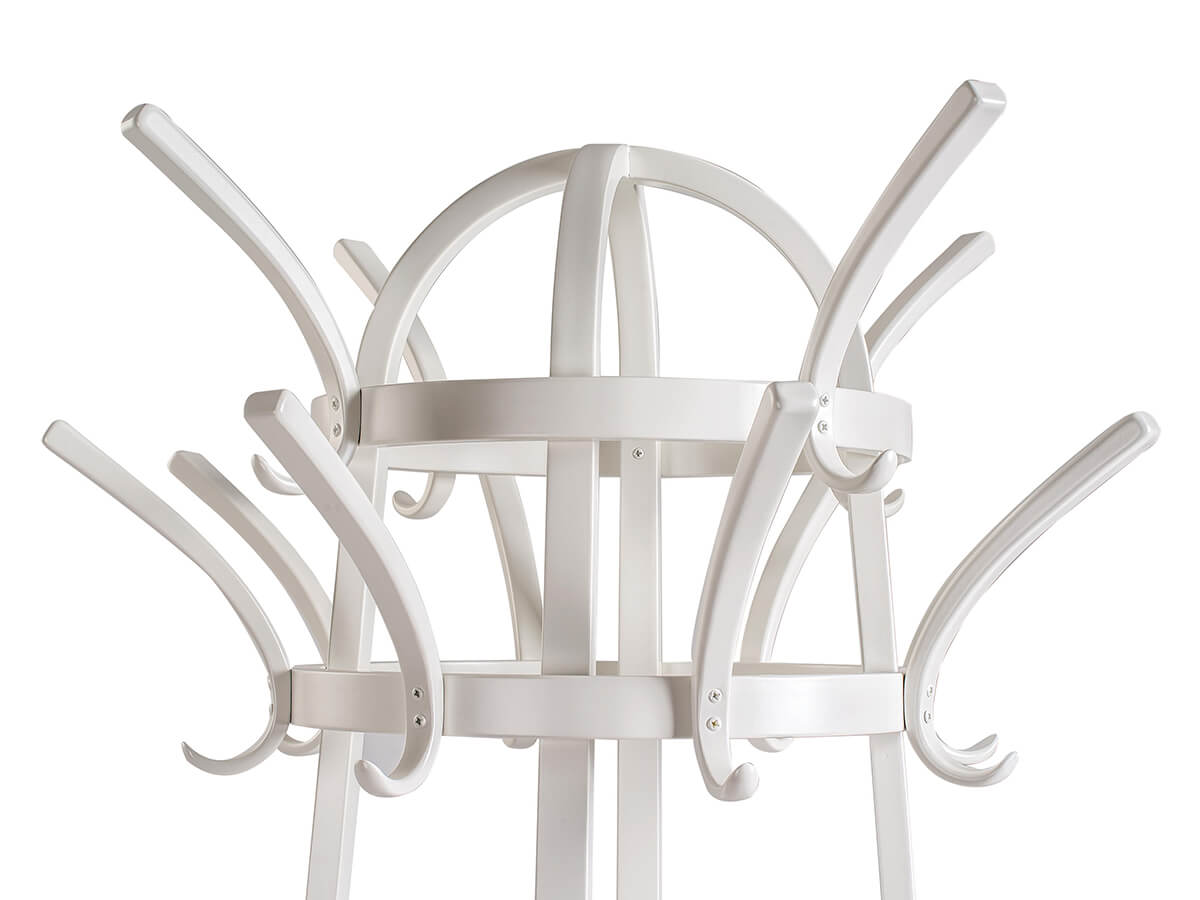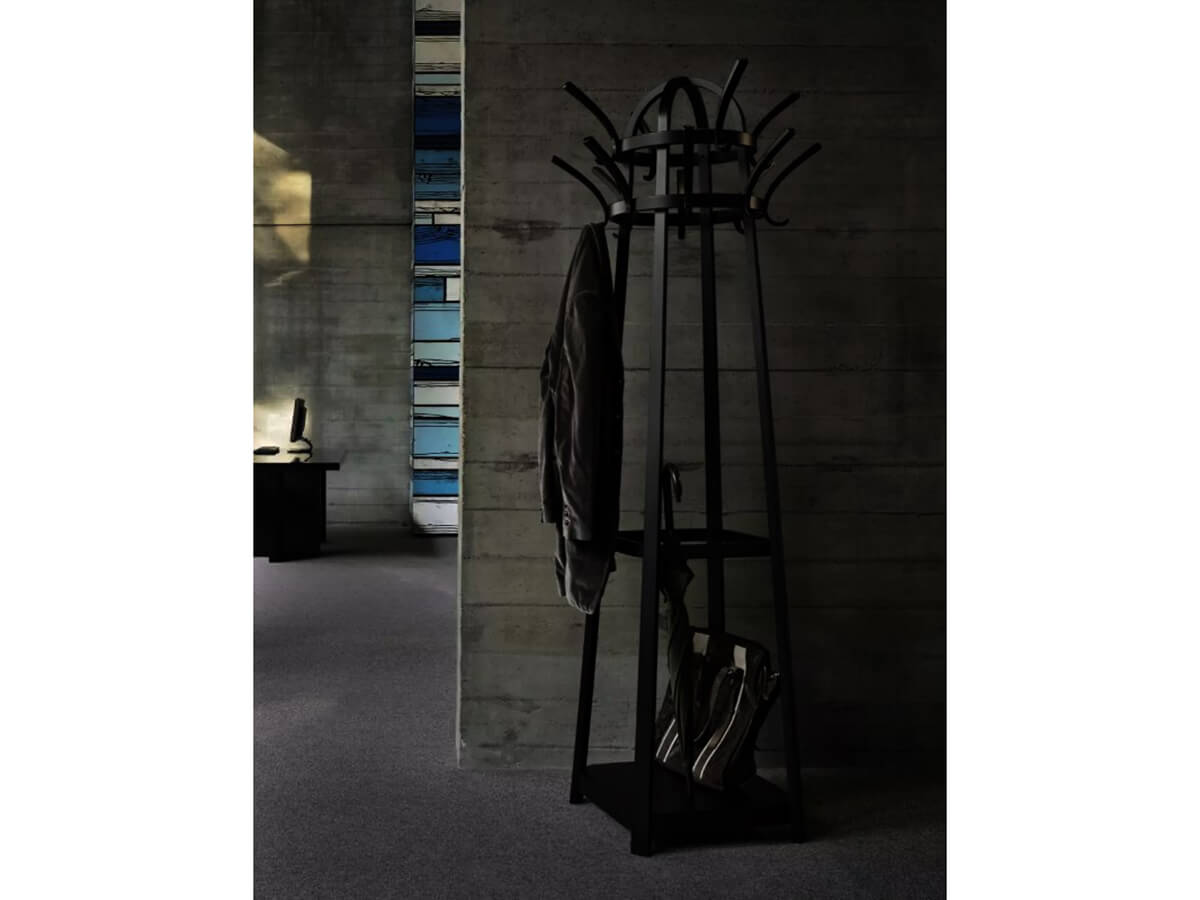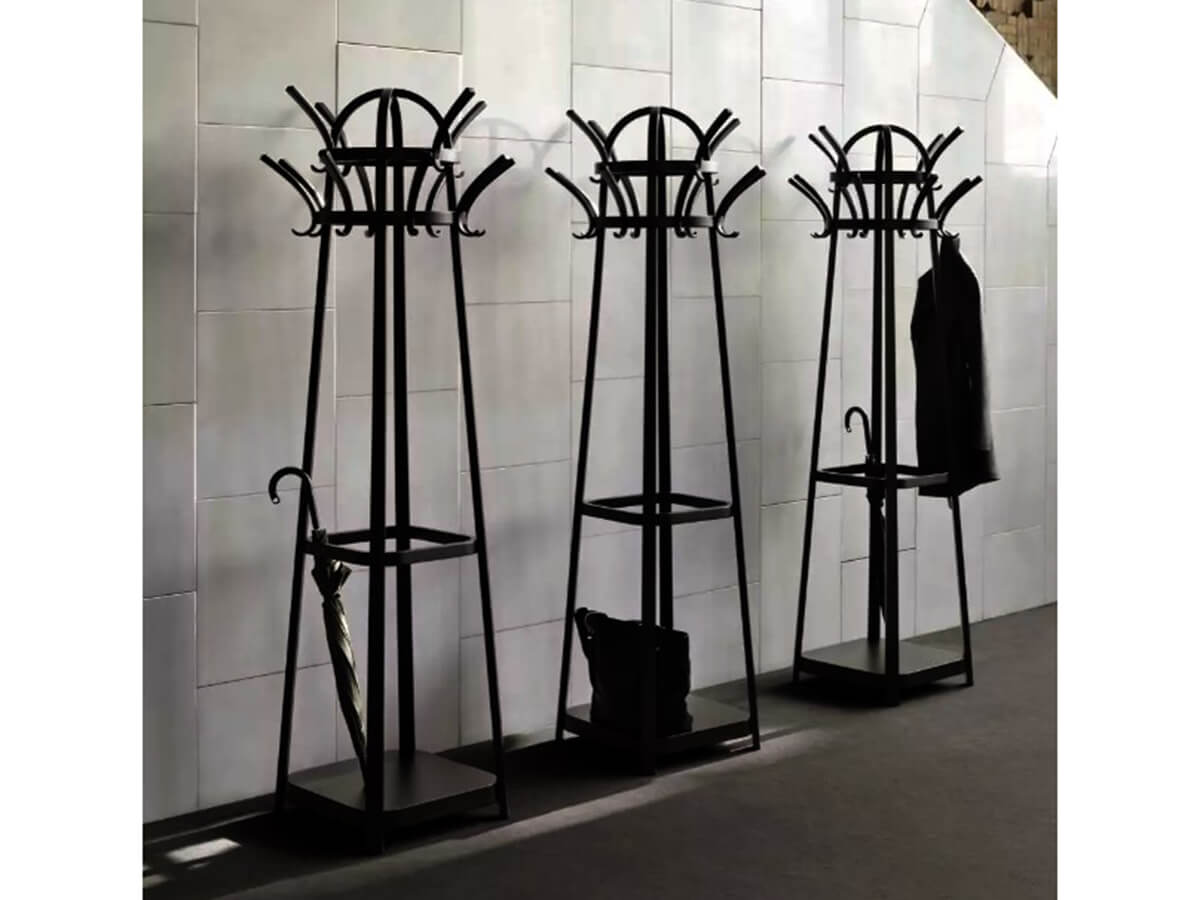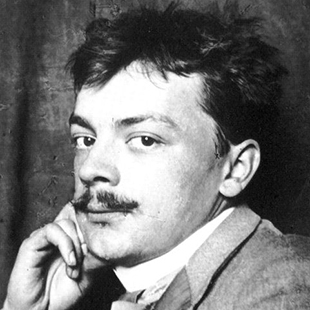Gebruder Thonet Vienna
Kolo Moser Coat-Rack
Price € 1.947,00
The graphic and picturesque talent of Koloman Moser meets the genius and craftsmanship tradition of Gebruder Thonet Vienna in giving life to a unique piece of furniture, of great impact and personality. Kolo Moser is a multifunctional coat rack, capable of adapting as needed to accommodate jackets, bags, umbrellas and much more. Its value is functional and decorative, perfect for meeting the taste of any room in the house, from the more modern to the less modern.
W.70 x D.70 x H.195 cm
Salvioni Design Solutions delivers all around the world. The assembly service is also available by our teams of specialized workers.
Each product is tailor-made for the personal taste and indications of the customer in a customized finish and that is why the production time may vary according to the chosen product.
To discover the full range of services available, visit our delivery page.
Personalize your request
Finishing
Select
Black Lacquered Beechwood
White Lacquered Beechwood
White Lacquered Beechwood
Select
Select
All design history books begin with the same name: Thonet. In fact, thanks to the research made by the German cabinet maker Michael Thonet on the bending of wood, the industrial production of furniture began. In 1842, Thonet was invited by Chancellor Metternich himself to continue his activity in Vienna, and it was precisely in the capital of the Hapsburg Empire that he founded the Gebrüder Thonet Vienna (GTV) involving his five sons. The company left an indelible mark and the Gebrüder Thonet Vienna chairs went to connote the style of an era, selling millions of pieces all over the world thanks to a cutting-edge distribution network.Read more
Designed by
Koloman Moser
Koloman Moser (1868-1918), artist and designer, was at the center of the lively cultural upheavals in early 20th-century Vienna that would play an important role in the birth of modern design. He studied painting and drawing at the Academy of Fine Arts in Vienna and worked for some years as a graphic artist before becoming in 1897 one of the founding members of the Viennese Secession, an artistic movement co-founded together with his friend Gustav Klimt and the architects Josef Hoffmann and Joseph Maria Olbrich. The group set itself in antithesis to the official interpretation of art then in vogue at the Künstlerhaus in Vienna and offered young artists a new space in which to exhibit their works, the Secession Building, designed by Olbrich and decorated by Moser. Moser's style, initially greatly influenced by the Art Nouveu-inspired floral decorative motifs that were the most popular during the Secession, then evolved towards severe geometric grids that anticipated the Baauhaus, clearly evident, for example, in the furnishings designed for the Purkersdorf sanatorium designed by Josef Hoffmann. Moser was the protagonist together with Hoffmann of another important initiative, the foundation of the Wiener Werkstätte, which took place in 1905 thanks to funding from Fritz Wärndorfer. In these workshops, of which Moser was artistic director until 1908, objects of artistic craftsmanship were produced which anticipated the practices of modern design as it would become established in the twentieth century. Moser signed furniture, glass objects, fabrics, book graphics and much more, to then dedicate the last years of his life mainly to painting. Today some of his creations are reissued by Gebrüder Thonet Vienna (furniture), Backhausen (fabrics) and Woka (lamps).
Read more
